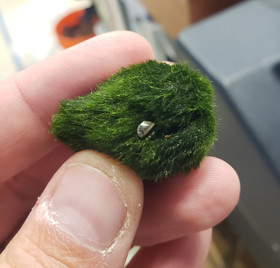New Mexico Department of Game and Fish
Public contact, Information Center: (888) 248-6866
Media contact, Tristanna Bickford: (505) 476-8027
tristanna.bickford@state.nm.us
FOR IMMEDIATE RELEASE, MARCH 12, 2021:
Invasive mussel found in aquarium plants in New Mexico
Santa Fe – Invasive zebra mussels have been found in moss balls sold as aquarium plants in pet stores and through online vendors across the state. Any moss balls purchased in New Mexico or online within the last year may pose serious risks to our state’s waterbodies, water systems and wildlife.

Retailers and anyone who has recently purchased a moss ball are urged to immediately follow the steps below to protect our waters and wildlife resources.
- Remove moss ball and any aquarium items and place in a heat safe pot; fill pot with tap water.
Bring water to a boil and boil contents for a minimum of one minute. - Discard moss ball in the trash; allow other aquarium items to completely dry.
- Discard boiled water onto grass or dirt.
- Complete a 100% aquarium water exchange; draining water onto grass or dirt and replace filter media, bio bags, etc.
- Rinse aquarium with hot water (minimum of 140 degrees), ensuring all sides receive hot water.
- Rebuild aquarium and monitor monthly for presence of zebra mussels.
Do not flush moss balls or discard any water into a toilet, sink, bathtub, storm drain or any water sources like ponds, lakes or rivers.
The Department and our federal partners have worked with pet stores to remove these products from store shelves and to limit further importation. Zebra mussels are a dangerous invasive species because they can reproduce quickly and become so dense they clog water pipes and boat motors as well as altering aquatic habitats to the detriment of fish and wildlife.
New Mexico remains one of seven states in the west without a population of invasive zebra or quagga mussels and has active education/outreach, early detection monitoring and prevention programs designed to reduce introduction.
For more information, visit the Department’s Aquatic Invasive Species webpage.
###
